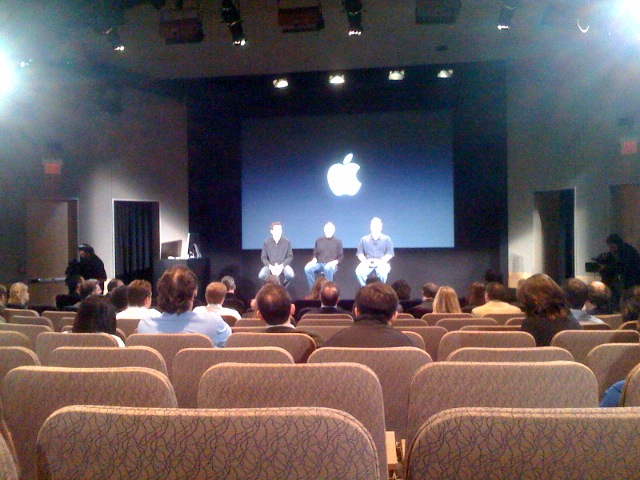When Apple launched the iPhone SDK in March 2008, they correctly anticipated a gold rush for iOS developers selling apps on the new App Store. Another gold rush is about to begin with the debut of iOS 11 and ARKit.
Given how the App Store story has played out over the last decade it’s hard to believe it started like this:

Look at all those empty seats. On stage, from left to right, was Scott Forstall, Steve Jobs, and Phil Schiller. I don’t think anyone in the room, except perhaps John Doerr from Kleiner Perkins, who announced the launch of the $100m iFund during the event, understood the magnitude of what had just happened.
Since then, the App Store has been the single biggest driver behind the power of the iPhone to change the world. In order to better understand the iOS platform that has emerged over the last nine years, and the platform on which ARKit will sit, we took a look at the growth of the App Store, the number of apps available, and the money paid out to developers. The growth isn’t all that surprising, but the accelerating pace of growth of the App Store ecosystem is staggering.
The growth isn’t all that surprising, but the accelerating pace of growth of the App Store ecosystem is staggering.
As of June 2017, iOS users had downloaded over 180B apps, which represents nearly 150M app downloads per day, a rate 82% faster than it was a year prior, at 80M app downloads per day in June 2016. This implies that each of the over 1B active iOS devices downloads 1 app per week.

As of January 2017, there were over 2.2M apps available on the App Store, which represents about 1,000 new apps available per day, a rate that has also shown an accelerating trend.

And as of June 2017, Apple has paid out over $70B in app revenue to developers, which represents $68M paid out to developers per day, a rate 26% faster than it was a year prior, $54M paid out to developers per day in June 2016.

ARKit and the possibilities it represents now sits on the shoulders of a massive and fast-growing iOS platform. There are now well over 1B active iOS devices around the world, although not all will run iOS 11 and ARKit apps. Given the broad ARKit compatibility (backward compatible to the 2015 iPhone 6s), we estimate that Apple’s device ecosystem for iOS 11 and ARKit will be over 200m devices at the launch of iOS 11. And if just 5% of paid apps leverage ARKit, the augmented reality apps on iOS would generate $1.7B in gross revenue per year (before Apple’s 30% take and the developers’ 70% net revenue). But many of the applications for augmented reality are entirely new and will justify – or even necessitate – an entirely new app, suggesting that our estimate is likely conservative. See a few early examples of ARKit apps here.
In short, ARKit will enable the second great gold rush in the App Store’s history. And eventually, the underlying technology will fundamentally change how we interact with information throughout our days. AR (starting with ARKit), will enable the future of computing – a more immersive paradigm for computing in which the digital information we need is available within our real-world field of view. iOS developers are already hard at work making it a reality.
Disclaimer: We actively write about the themes in which we invest: artificial intelligence, robotics, virtual reality, and augmented reality. From time to time, we will write about companies that are in our portfolio. Content on this site including opinions on specific themes in technology, market estimates, and estimates and commentary regarding publicly traded or private companies is not intended for use in making investment decisions. We hold no obligation to update any of our projections. We express no warranties about any estimates or opinions we make.